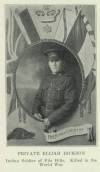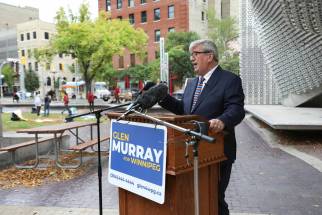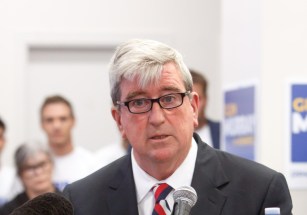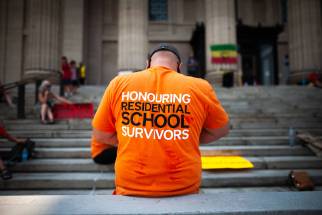Ojibwa lessons as elementary building blocks
Read this article for free:
or
Already have an account? Log in here »
To continue reading, please subscribe:
Monthly Digital Subscription
$0 for the first 4 weeks*
- Enjoy unlimited reading on winnipegfreepress.com
- Read the E-Edition, our digital replica newspaper
- Access News Break, our award-winning app
- Play interactive puzzles
*No charge for 4 weeks then price increases to the regular rate of $19.00 plus GST every four weeks. Offer available to new and qualified returning subscribers only. Cancel any time.
Monthly Digital Subscription
$4.75/week*
- Enjoy unlimited reading on winnipegfreepress.com
- Read the E-Edition, our digital replica newspaper
- Access News Break, our award-winning app
- Play interactive puzzles
*Billed as $19 plus GST every four weeks. Cancel any time.
To continue reading, please subscribe:
Add Free Press access to your Brandon Sun subscription for only an additional
$1 for the first 4 weeks*
*Your next subscription payment will increase by $1.00 and you will be charged $16.99 plus GST for four weeks. After four weeks, your payment will increase to $23.99 plus GST every four weeks.
Read unlimited articles for free today:
or
Already have an account? Log in here »
Hey there, time traveller!
This article was published 29/09/2022 (1164 days ago), so information in it may no longer be current.
Biik Allen was hired to be one of the first Ojibwa language instructors in the Louis Riel School Division, but she says elementary students make her feel more like a celebrity.
“I love my job. The kids are always so excited to see you. You’re like a rock star,” said Allen, who is affectionately known by her colleagues and students as Biik — a nod to her traditional name, Bezhigwanebiik, “the line on an eagle feather.”
Thursday was no exception; Grade 2 and 3 students had a hard time sitting still in their seats when they saw visitors Kelsey Lenaghan and Allen appear at the door of Room 4.
Shortly after their morning lesson began at Marion School (in the Central St. Boniface neighbourhood in Winnipeg), all 24 of the pupils were engaged in an opening sing-along. They belted out an Anishinaabemowin tune about greeting one another (“boozhoo aaniin gakina awiiya”) in unison.
RUTH BONNEVILLE / WINNIPEG FREE PRESS These wide-eyed learners, along with hundreds of their young peers, participate in 60 minutes of Indigenous language lessons every six-day cycle.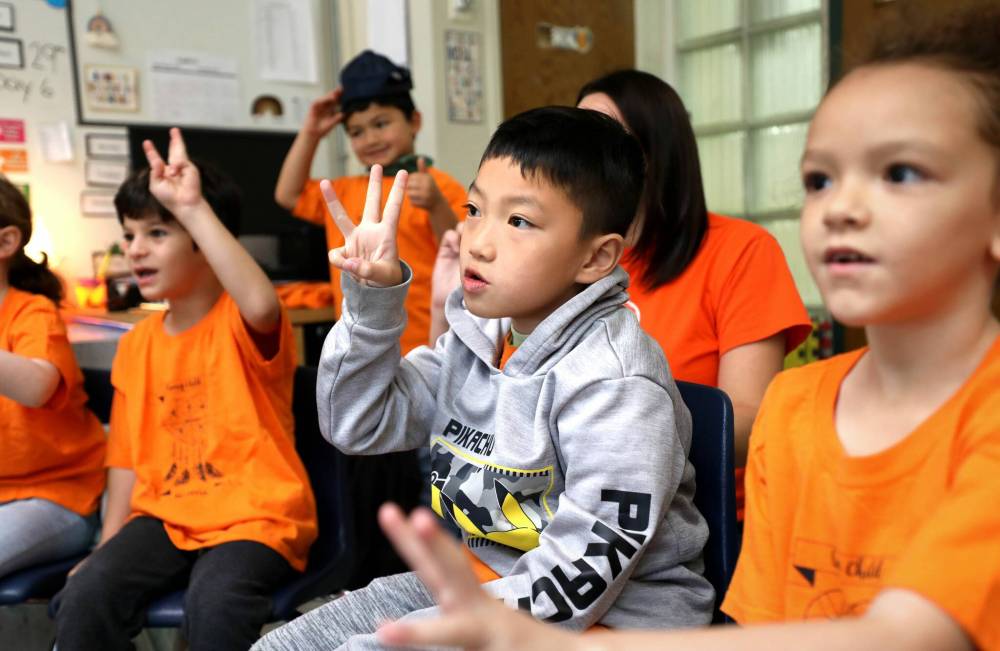
These wide-eyed learners, along with hundreds of their young peers, participate in 60 minutes of Indigenous language lessons every six-day cycle.
While some metro school divisions offer an Ojibwa bilingual stream to support children in journeying to becoming fluent speakers, LRSD administrators took — at the recommendation of local community members — a different approach to Indigenous language education in 2016.
It was then the division rolled out a pilot that aimed to expose some of its youngest learners, from both Indigenous and non-Indigenous families, to Ojibwa.
There was an understanding among teachers, principals, families and other stakeholders that it would be beneficial to reach all students with regular, introductory Indigenous instruction, said Marion principal Corey Kapilik. At the time, Kapilik was the division’s co-ordinator of Indigenous education.
RUTH BONNEVILLE / WINNIPEG FREE PRESS Instructors: (from left) Courtney Kirkness, Biik Allen, Mia Kutny, Kelsey Lenaghan, Hilda Kent and Debbi Neufeld.
“It’s very important, I think, that kids see Indigenous people using Indigenous languages in our schools. For the Indigenous kids, it’s inspiring. For non-Indigenous kids, what a wonderful learning opportunity (it is),” he said, adding role models such as Allen and Lenaghan are invaluable to school communities.
“We’re really hoping that we can instill in our children that piece of understanding of who we are as Canadians and our role in relationships with each other.”
By 2018-19, more than 50 classrooms were participating in frequent Anishinaabemowin programming in the division. This year, LRSD’s growing team of traditional language instructors is meeting with a combined 79 classrooms across 20 elementary buildings.
Kapilik now oversees the St. Boniface school that houses the language exposure team’s headquarters. Four Ojibwa instructors, a new Cree instructor, and a Dene resource developer work out of the building on Des Meurons Street and travel across the division to their assigned schools.
RUTH BONNEVILLE / WINNIPEG FREE PRESS The budding program is similar to essential French, although it focuses heavily on land- and play-based education.
Their lessons cover basic counting and vocabulary, including greetings, weather and animals. Drumming, crafts and discussions about the contemporary lifestyles of Indigenous peoples are also part of the initiative, which is mainly offered to participants in K-2 levels at present.
The budding program is similar to essential French, although it focuses heavily on land- and play-based education.
“We can’t teach language without teaching culture and vice versa, and so that’s part of the beauty of the program — we get to explore both,” said Lenaghan, leader of the Indigenous languages team.
Lenaghan said she is amazed by the “turnaround” she has seen in her lifetime.
RUTH BONNEVILLE / WINNIPEG FREE PRESS Kelsey Lenaghan uses stuffed animals, along with singing and counting exercises to teach Grades 2 and 3 students in Marion School’s about the Ojibwe language.
Being an Anishinaabe ikwe, she said she often encountered racism and bullying at the rural school she attended growing up. Lenaghan only started learning her ancestors’ language once she became an adult, because she said her mother — a survivor of the day school system and daughter of a residential school survivor — thought she was protecting her children by not teaching them Ojibwa.
For Lenaghan, the ability to work alongside a group of Indigenous women and witness the joy of student participants in their LRSD program is healing. She wants to see the program continue to expand.
“I love our language. I love our culture, and being able to share that passion with kids and seeing those Indigenous students in the class having that sense of pride and excitement just makes everything worth it. It’s really fulfilling. We often say that our kids are medicine,” she said.
“All of us on our team carry trauma and so, working with these students and being able to share a part of us that we’re really proud of just instills pride.”
Allen echoed those comments Thursday, the final day of instruction before public schools closed for the National Day for Truth and Reconciliation.
As the duo wrapped up their morning lesson, Lenaghan thanked the students for their participation (miigwetch) and reminded them of the phrase (giga waabamin miiniwa) Ojibwa speakers use when they part ways.
“Remember: there’s no word for goodbye,” she said. “We say, ‘I will see you again.’”
maggie.macintosh@freepress.mb.ca
Twitter: @macintoshmaggie

Maggie Macintosh reports on education for the Winnipeg Free Press. Funding for the Free Press education reporter comes from the Government of Canada through the Local Journalism Initiative.
Our newsroom depends on a growing audience of readers to power our journalism. If you are not a paid reader, please consider becoming a subscriber.
Our newsroom depends on its audience of readers to power our journalism. Thank you for your support.

